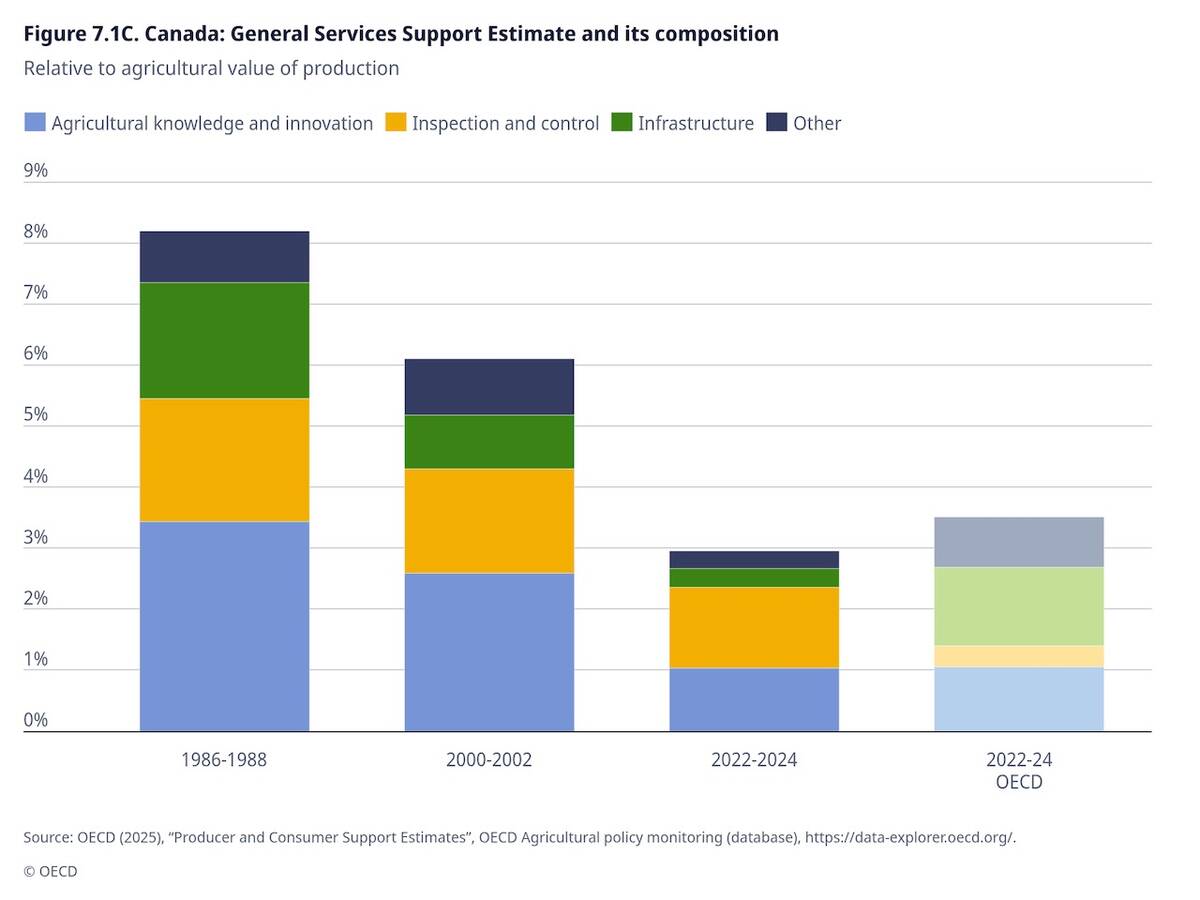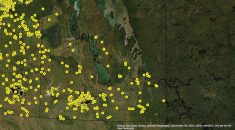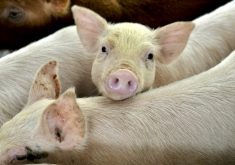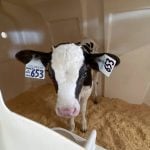Afederal government program to help hog producers leave the industry could risk running out of money before serving all applicants.
The $75 million in the program may not be enough to meet the demand at the rate inquiries are going, said Karl Kynoch, Manitoba Pork Council chairman.
The early response to the long-awaited program announced late last week suggests more hog producers want to leave than stay in the business.
Kynoch said the phone calls he gets from producers asking about the transition program are outnumbering inquiries about a federal loans program by about 20 to one.
Read Also

OECD lauds Canada’s low farm subsidies, except supply management
The Organization for Economic Co-operation and Development says Canada’s farm subsidies are among the lowest, but still criticized supply management industries like dairy, poultry and eggs.
If so, that could end up depleting the program fairly quickly, leaving many producers with heavy debt loads, no more available credit and barns full of money-losing pigs.
NOT THE FIRST OPTION
The Canadian Pork Council, which administers the transition program, urges producers not to see it as the first option for getting out of a troubled industry.
“At the end of the day, we’re expecting producers to look at and consider the loan program first, which we believe a majority of the industry will be eligible for,” said Gary Stordy, a CPC spokesperson.
“The hog farm transition program is intended to catch producers that may not be eligible for the loan program.”
The loan and transition programs are part of a three-pronged
approach by the federal government to deal with the current financial crisis in the pork industry. Ottawa is also spending $17 million to promote Canadian pork at home and abroad.
The government will guarantee up to 90 per cent of the value of loans to producers, to a maximum of $85 per market hog, $30 per weaner and $25 per isowean. Loans negotiated between producers and lenders will be for up to 15 years. The application deadline is March 1, 2010. To qualify, producers must have a viable business plan.
But the loans program comes with a catch. Producers must use the money to pay off outstanding 2008-09 cash advance payments first. The maximum eligible amount for cash advances is $400,000.
TENDER BIDS
The transition program enables producers to idle their barns for at least three years. Producers will tender bids for the amount they would be willing to accept, based on their operations. Registration forms became available this week.
Kynoch expressed concern about the transition program, saying it gives producers no guidelines on how much to bid.
“You’re going to have to kind of pick a number on what you’re willing to take to shut that operation down for three years,” he said. “It’s going to be a really tough decision.”
Kynoch also worried the program pits one producer against another, especially if they’re operating blindly.
“You could have two operations exactly the same side by side. If one bids quite a bit more than the other, they might both get accepted or maybe only the lower one gets accepted, depending on when (the government runs) out of money.”
Kynoch said CPC asked for per-animal payments instead of the bidding system. “It would really have simplified it for producers if they knew an exact number.”
Stordy said the transition program will hold a series of auctions over the next few months and will end when the $75 million runs out. “We’re working on the basis that we’re going to deplete the whole fund. We may or may not.”
He urged producers to check with their accountants and lending institutions before deciding which of the two programs to pursue.
Farm Credit Canada is participating, although a complete list of lenders taking part in the program was not available at press time Monday. [email protected]














